Imagine lying on a blanket under the vast night sky, watching thousands of twinkling stars. That’s the incredible experience of stargazing at Great Basin National Park.
Known as one of the last true dark skies in America, the park has been designated an International Dark Sky Park for its fantastic opportunities to see the beauty of the night.
Pick a spot with an open horizon to make the most of your stargazing adventure. Some great locations include the Mather Overlook on the Wheeler Peak Scenic Drive or the Baker Archaeological Site. The best part is that you don’t need fancy equipment to enjoy the stars – just your eyes and maybe a cozy blanket.
As you gaze up at the stars, picture yourself traveling through the galaxy, exploring new planets, and meeting funny-looking aliens. The stars are like a giant celestial roadmap, guiding you through a fantastic space adventure. So, grab your friends or family and head out to Great Basin National Park for a night of unforgettable stargazing.
In this article, you get
Helpful tips on the best locations for stargazing in Great Basin
Some background as to why this Dark Sky Park has excellent stargazing conditions
Answers to frequently asked questions about Great Basin stargazing
By the end of this article, you’ll have all the info you need to plan your next Great Basin National Park stargazing adventure.
Let’s dive right in.
Recommended For You
Great Basin National Park Stargazing Overview

Nevada’s Dark Sky Paradise
Hey there, stargazing enthusiast! Do you know that Nevada has a fantastic spot for stargazing?
Great Basin National Park offers a breathtaking experience for those of us who love to explore the night sky. With its remote location (about 4.5 hours from Las Vegas) and high elevation, you can see the stars shining brightly like jewels in the dark sky.
Here are some cool spots in the park for stargazing:
- Mather Overlook on the Wheeler Peak Scenic Drive
- Baker Archaeological Site
- Ranch Interpretive Site
International Dark-Sky Association Designation
Great Basin National Park isn’t just any stargazing site. It’s an International Dark Sky Park designated by the International Dark Sky Association.
This recognition is a big deal! It means that the park offers some of the best dark skies in the lower 48 states.
So, when you visit, you’ll have a chance to see an incredible number of stars, planets, and even some meteors if you’re lucky.
Tips for Stargazing at Great Basin National Park
To make your stargazing adventure even better, here are a few tips you can follow:
- Check the weather: Clear nights are perfect for stargazing; clouds can block your view of the stars.
- Bring a star map: A star map will help you identify constellations and other celestial objects.
- Use red light: Preserve your night vision using red lights instead of white ones.
- Dress warmly: Nights in the park can be chilly, so wear warm clothes and bring extra layers.
The following section will discuss more details about Great Basin National Park, its location, and the best times to visit. So stay tuned to learn more about your next stargazing adventure!
FREE STARGAZING CHECKLIST
My 5-page Stargazing Checklist will enhance your astronomical observations.
Follow this free checklist to navigate the night sky with confidence, clarity, and a sense of preparedness for a rewarding stargazing experience.

Related Content: Read my article on more of the best stargazing locations in Nevada.

Best Stargazing Locations in the Park
Mather Overlook
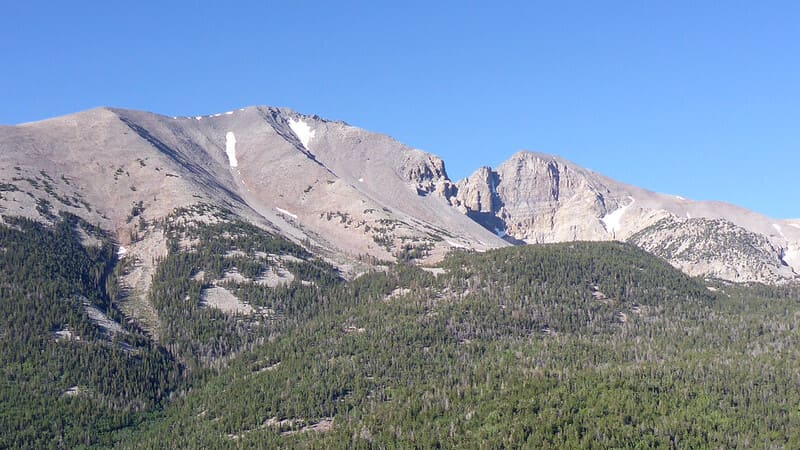
Mather Overlook is a fantastic spot for stargazing due to its higher elevation. To get there, follow the Wheeler Peak Scenic Drive. Remember to bring a blanket and a telescope if you have one! You can easily spot numerous stars and constellations in the night sky.
Baker Archaeological Site
Another excellent location is the Baker Archaeological Site. It’s near the town of Baker. Not only can you enjoy clear, dark skies, but you can also learn about the area’s history. Bring a red flashlight to see without affecting your night vision or disturbing others around you.
Bristlecone Pine Groves
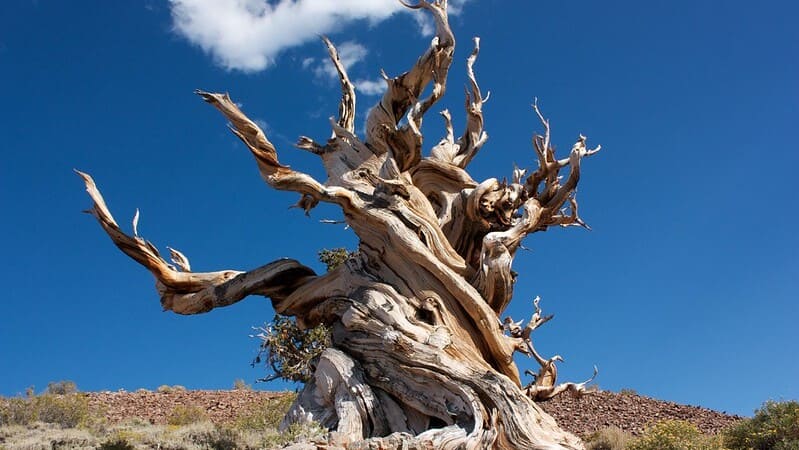
Bristlecone Pine Groves provide a unique and majestic backdrop for your stargazing experience. These ancient trees are some of the oldest living organisms on Earth. The serene environment of the groves makes it a magical place to stargaze at night. While there, you can also explore the beautiful hiking trails during the day.
Wheeler Peak Scenic Drive

Finally, the Wheeler Peak Scenic Drive offers several spots to stop and gaze at the night sky.
Here are some tips to make your experience more enjoyable:
- Choose a spot with an open horizon.
- Avoid areas with too much human activity.
- Use a stargazing app to help identify stars and constellations.
With these amazing Great Basin National Park locations, your stargazing adventures will be out of this world! As you continue exploring the park, remember to watch for more celestial sights to discover.
Astronomy Events and Programs
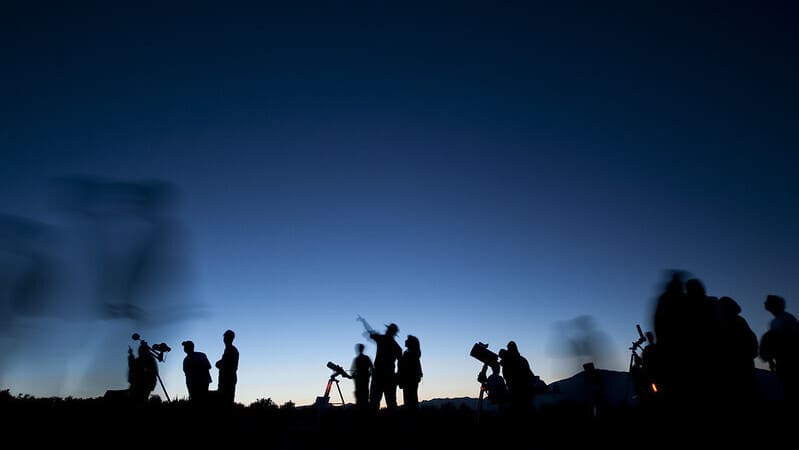
Great Basin Astronomy Festival
The Great Basin National Park hosts the Great Basin Astronomy Festival every year. It’s a fun event for everyone, where you can learn about stargazing from astro-experts.
During the festival, you’ll enjoy:
- Stargazing with powerful telescopes
- Exciting talks by astronomy professionals
- Astrophotography workshops for capturing the night sky
Astronomy Amphitheater Events
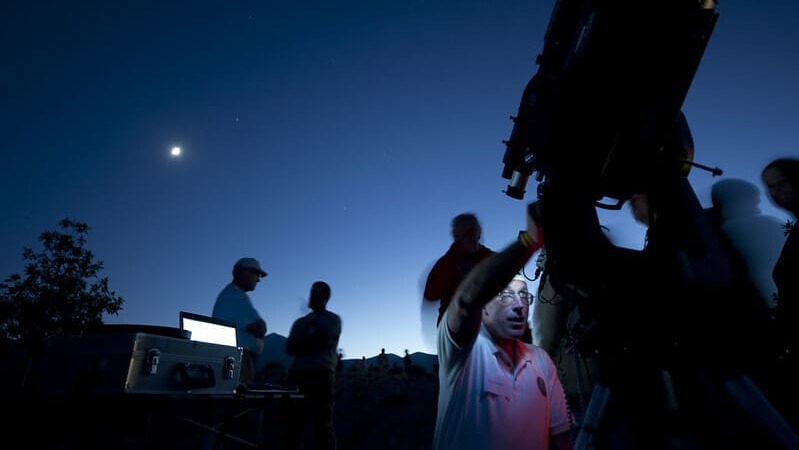
The park’s Astronomy Amphitheater is a great place to attend special stargazing events. Here, you can listen to guest speakers and watch fantastic presentations under the stars.
Some fun activities at the theater include:
- Interactive astronomy programs
- Constellation tours
- Star myths and storytelling
Dark Sky Ranger Programs

The Dark Sky Rangers are excellent guides that can help you explore the wonders of the night sky at Great Basin.
These ranger-led programs give you a chance to learn all about:
- Stars and constellations
- Planets and the Moon
- How to preserve dark skies
With their guidance, you can impress your friends with your newfound stargazing knowledge!
So, now that you’ve learned about the fantastic astronomy events and programs offered at Great Basin National Park, you’re ready to move on to the next section: planning your own stargazing adventure!
Activities and Amenities in Great Basin National Park
Caves
One of the key attractions in Great Basin National Park is Lehman Caves. You can explore this fascinating underground world by joining a guided tour at the Lehman Caves Visitor Center. These tours are fun and informative, so you’ll learn about the cave’s unique formations and history.
Hikes
Great Basin National Park offers various hikes suitable for all ages and abilities. Some trails take you through forests, while others lead you to ancient bristlecone pine trees or breathtaking viewpoints. Remember to wear comfortable shoes and bring water on your hikes.
- For beginners: Mountain View Nature Trail
- For intermediate hikers: Bristlecone Pine Trail
- For advanced hikers: Wheeler Peak Trail
Fishing Opportunities
If you love fishing, Great Basin National Park has several creeks and alpine lakes where you can cast a line. Remember to follow park regulations and bring your fishing gear.
Camping and Accommodation Options
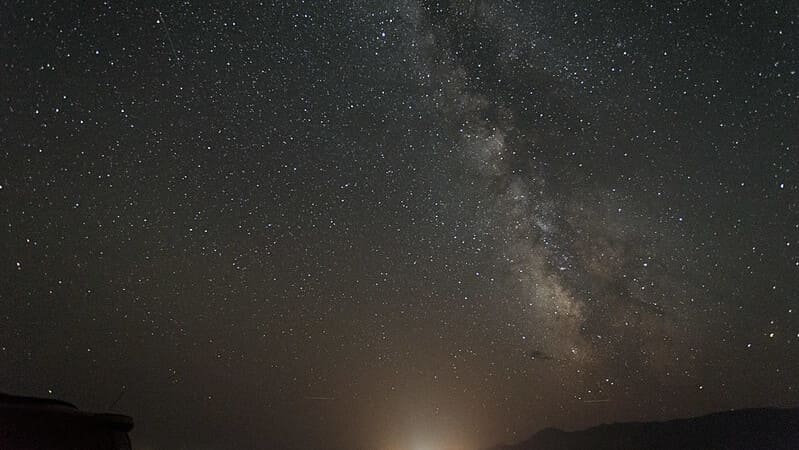
Campgrounds
There are several campgrounds in the park to make your stay more enjoyable.
You can choose from the following:
- Lower Lehman Creek Campground
- Upper Lehman Creek Campground
- Wheeler Peak Campground
- Baker Creek Campground
Please note that some campgrounds might be seasonal, so check their availability before your visit.
Backcountry Camping
For those seeking adventure, backcountry camping is also available. Ensure to obtain a free backcountry permit before embarking on this adventure.
Accommodation Options
If camping is not your thing, you can find lodging options nearby, such as motels, bed and breakfasts, or vacation rentals. Book your accommodations well in advance, as they might fill up quickly.
Now that you’ve learned about the exciting activities and amenities in Great Basin National Park, you’re ready to explore the park and have a fantastic time.
In the next section, we’ll dive deeper into the park’s stargazing opportunities and how to make the most of them. So, let’s get starry-eyed!
Star Train and Nearby Attractions
Nevada Northern Railway’s Star Train
Prepare for an unforgettable adventure on the Nevada Northern Railway’s Star Train! This themed train ride takes you on a journey to enjoy the beautiful night skies of Nevada.
You can expect the following:
- A ride from May to September
- A chance to see interstellar constellations
- Prices start as low as $25
Exploring Surrounding States
Remember to explore the nearby states, which are also great for stargazing!
- Utah: Utah has stunning national parks, like Zion and Bryce Canyon.
- Arizona: Visit the famous Grand Canyon National Park for breathtaking views and clear skies.
- Colorado: The Rocky Mountain National Park is perfect for nature and stargazing enthusiasts.
Here are some tips for your stargazing journey:
- Check the weather before you go
- Bring a warm jacket for chilly nights
- Look for guided tours to learn more about the stars
With the Star Train and nearby attractions in mind, you’re all set for a fantastic stargazing experience. The following section will explore how to enjoy your stargazing adventures best.
Night Sky Viewing Tips and Equipment
Telescopes and Star Charts
To make your stargazing experience even more exciting, you can use a telescope to get closer views of stars, planets, and the Milky Way. For beginners, it’s best to start with a simple telescope that’s easy to use.
Some apps on your phone or tablet can also help you find constellations and planets by acting as a digital star chart.
- Choose a beginner-friendly telescope
- Use your phone or tablet as a digital star chart
- Learn about constellations, planets, and celestial events
Photographing the Night Sky
Capturing the breathtaking beauty of the night sky can be a fun and rewarding experience.
To take great pictures, follow these simple tips:
- Use a tripod: A stable base will help you avoid blurry photos
- Set a long exposure time: This allows more light from stars and planets to reach your camera
- Focus manually: Autofocus might struggle in low light conditions, so switch to manual focus
- Experiment with ISO settings: Higher ISOs can capture more details but may introduce noise in your photos
With these tips and some practice, you’ll soon take stunning night sky photos at Great Basin National Park. Remember to respect the park’s rules and focus on preserving its precious dark skies by minimizing light pollution.
Now that you’re prepared with proper equipment and techniques enjoy your stargazing adventure and take in the wonders of the universe at your fingertips.
In the next section, we’ll explore ways to make the most of your Great Basin National Park visit.
Seasonal Considerations and Weather
Best Time of Year for Stargazing
Summertime is perfect for stargazing in Great Basin National Park. During summer nights, you’ll enjoy clear skies and fantastic views of the stars. Here’s a simple guide to make your stargazing experience better:
- Plan your visit during a new moon or when there’s less moonlight.
- Avoid visiting during stormy weather.
- Choose a location within the park with an open horizon.
Read my article about Milky Way Season in Nevada.
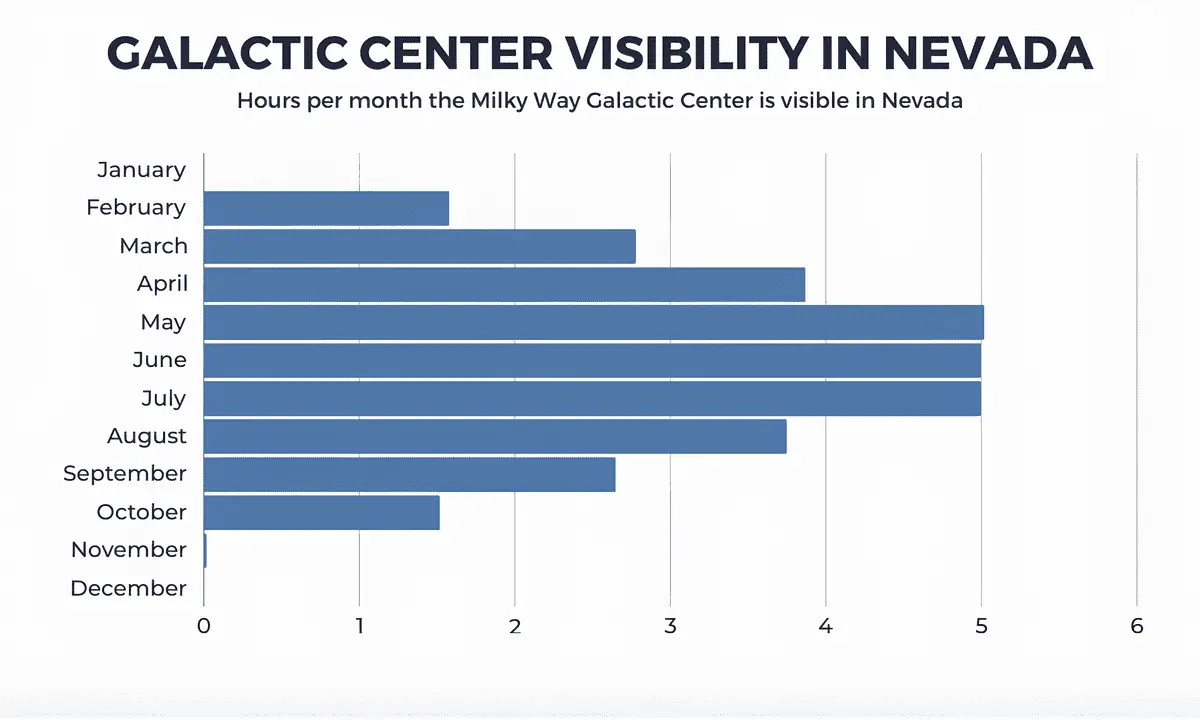
Weather Forecasts and Satellite Data
To ensure you have a wonderful stargazing experience, keep an eye on the weather forecast for the park.
You can use apps and websites to track cloud cover and visibility. Also, consider checking satellite data to get an idea of sky conditions. Doing this gives you a better idea of when to go stargazing and enjoy clear night sky views.
Summer nights at Great Basin National Park are an excellent time for stargazing. Proper planning and preparation allow you to have an unforgettable experience gazing at the stars.
Frequently Asked Questions
What is the best time for stargazing?
The best time for stargazing in Great Basin National Park is during the dark and clear nights when the moon is not too bright. One ideal period is during the new moon phase when the sky is darkest.
Additionally, watch for meteor showers, such as the Perseids in August, which offer spectacular celestial displays.
Remember to dress warmly, bring a cozy blanket, and pack some hot cocoa for a comfortable and enjoyable stargazing experience.
What is the Great Basin Astronomy Festival?
The Great Basin Astronomy Festival is a fantastic annual event that celebrates the wonders of the night sky.
Held in Great Basin National Park, it brings together astronomers, enthusiasts, and families for a captivating weekend of stargazing, workshops, and engaging activities. From telescope viewings to astronomy-themed presentations, this festival offers a chance to learn, connect, and marvel at the cosmos.
Mark your calendar and join in on this extraordinary celestial celebration for an unforgettable astronomical adventure.
Are there guided stargazing tours in Great Basin National Park?
Absolutely! Great Basin National Park offers guided stargazing tours that provide an immersive and educational experience.
Expert guides will lead you through the celestial wonders, offering fascinating insights and illuminating constellations. With the aid of telescopes, you can witness distant galaxies, sparkling star clusters, and even the intricate details of the moon.
Be sure to check the park’s schedule for guided tours and take advantage of this opportunity to explore the mysteries of the universe under the guidance of knowledgeable astronomers.
Where is the Astronomy Amphitheater located?
The Astronomy Amphitheater in Great Basin National Park is in a picturesque location near the Lehman Caves Visitor Center. This open-air venue provides an ideal setting for stargazing events and astronomy programs.
Surrounded by the park’s natural beauty, you can sit comfortably and gaze at the stunning night sky. The Astronomy Amphitheater is a perfect spot to immerse yourself in the wonders of the cosmos while enjoying the serenity of the park’s tranquil surroundings.
How accessible is the park for night sky viewing?
Great Basin National Park is renowned for its exceptional night sky visibility, making it a haven for stargazers. The park boasts minimal light pollution, allowing for optimal viewing conditions.
Whether you explore the skies from the comfort of your car or venture onto one of the park’s designated stargazing areas, you’ll be greeted by a vast celestial canvas. Embrace the opportunity to witness countless stars twinkle above, with the Milky Way arching majestically across the darkness.
Bring a red flashlight to preserve your night vision and enhance your stargazing experience.
What special events occur for stargazing?
Great Basin National Park hosts various special events tailored for stargazing enthusiasts throughout the year.
These events include meteor shower viewings, telescope workshops, and astronomy-themed lectures. For instance, the park organizes Star Parties, where visitors can gather with astronomers and experience the magic of the night sky through powerful telescopes.
These events provide a unique opportunity to engage with experts, ask questions, and delve deeper into the wonders of our universe. Stay updated with the park’s event calendar to ensure you get these exciting celestial happenings.
Summary: Great Basin Stargazing
Thank you for reading my article on Great Basin National Park Stargazing.
Great Basin National Park is an extraordinary place for stargazing. With some of the darkest night skies in the United States, you can see thousands of stars, planets, and even the Milky Way with your naked eye. The park has been designated an International Dark Sky Place, so you know it’s a top spot for enjoying the night sky.
You don’t need to be an expert to stargaze at Great Basin. Some of the best spots for stargazing include Mather Overlook on the Wheeler Peak Scenic Drive, Baker Archaeological Site, and Ranch Interpretive Site. But anywhere in the park with an open horizon will give you a breathtaking sky view.
Here are a few tips to make your stargazing experience even better:
- Choose a night with clear skies and little moonlight for the best views.
- Bring a blanket or chair for comfort, and remember your binoculars or telescope if you have one.
- Bring your friends and family; stargazing is a fun and memorable activity to share with others. Plus, it’s an excellent opportunity to learn about the universe’s wonders together.
So pack your stargazing gear and head to Great Basin National Park. You’re in for an unforgettable night of admiring the wonders of the cosmos. The stars are awaiting your arrival!
Additional articles from my Dark Sky Parks series you may enjoy about other best National Parks for stargazing:
- Acadia National Park stargazing
- Anza-Borrego stargazing
- Arches National Park stargazing
- Big Bend National Park stargazing
- Bryce Canyon National Park stargazing
- Capulin Volcano National Monument stargazing
- Cherry Springs State Park stargazing
- Copper Breaks State Park stargazing
- Cosmic Campground Dark Sky Sanctuary stargazing
- Death Valley National Park stargazing
- Enchanted Rock stargazing
- Grand Canyon stargazing
- Joshua Tree National Park stargazing
- Haleakala National Park stargazing
- Massacre Rim Dark Sky Sanctuary stargazing
- Olympic National Park stargazing
- Oracle State Park stargazing
- Red Rock Canyon stargazing
- Rocky Mountain National Park stargazing
- Tonopah Stargazing Park stargazing
- Yellowstone NP stargazing
- Zion National Park stargazing




